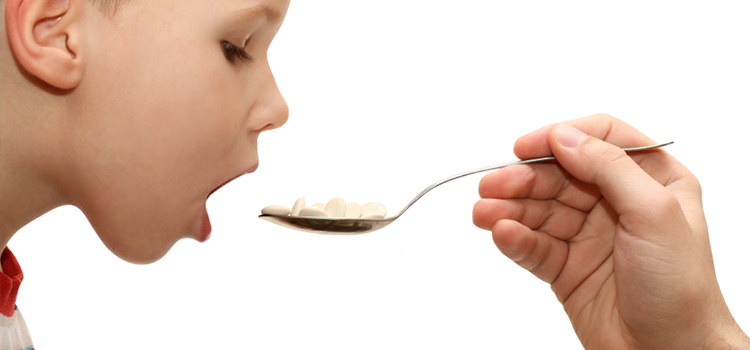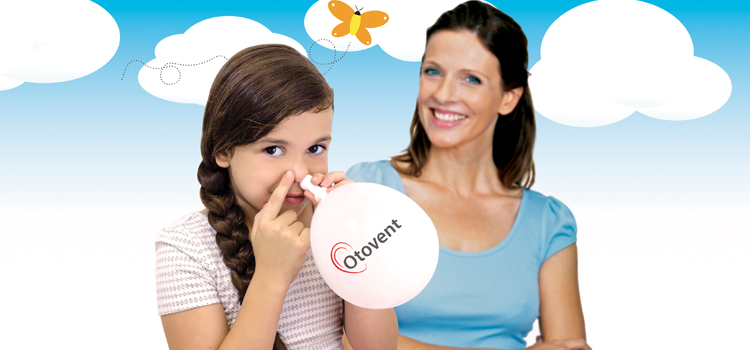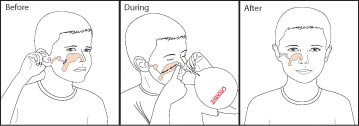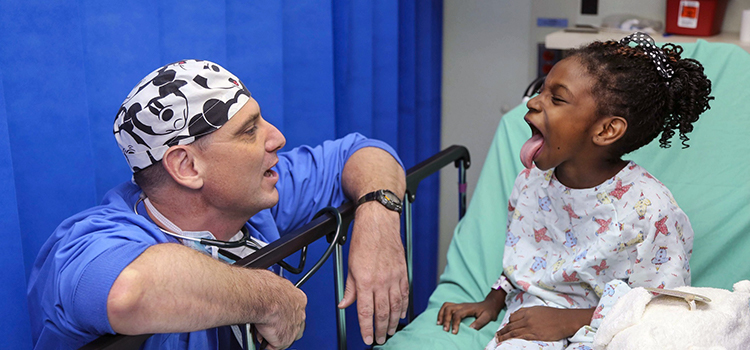Treatment Options
The American Academy of Pediatrics (AAP) and the American Academy of Family Physicians (AAFP) recommend a wait-and-see approach for the first 72 hours of an ear infection for children who:
• Are older than age 6 months
• Are otherwise healthy
• Have mild signs and symptoms or an uncertain diagnosis

Most ear infections clear on their own in just a few days - and antibiotics won't help an infection caused by a virus. In fact, about 80 percent of children with acute Otitis media recover without antibiotics, according to the AAP and AAFP.
If your child is uncomfortable, the doctor may recommend an over-the-counter pain reliever such as acetaminophen (Tylenol, others) or ibuprofen (Advil, Motrin, others). If your child doesn't have drainage from the ear or ear tubes, prescription eardrops containing a local anesthetic may be an option, too. The drops won't cure the infection, but they may relieve pain.
Warm the drops slightly by placing the bottle containing the drops in warm water. Then gently lay your child on a flat surface with his or her infected ear facing up. Don't insert the drops with your child in your arms or on your lap.

Antibiotic Therapy
If your child is younger than age 6 months or has two or more ear infections within 30 days or chronic Otitis media with effusion, the doctor may recommend an antibiotic. If the medication is effective, your child should start feeling better in a few days. Give your child the antibiotic for the full length of the prescription. Stopping medication too soon could allow the infection to come back.
Remember, antibiotics won't help an infection caused by a virus - and the overuse of antibiotics contributes to strains of the bacteria that resist these medications. Side effects - such as vomiting, diarrhea and allergic reactions - are possible as well.

Positive Pressure Treatment
Closure of the Eustachian Tubes (ET) passages is thought to be a major contributor to the painful symptoms of middle ear infections. It has been demonstrated that if atmosphere can be gently directed up the closed ET tube with positive pressure, those systems can be released.
OTOVENT™
For more than fifteen years, Invotec International has distributed the Otovent positive pressure device as a natural alternative to surgical treatment of Otitis Media.
Used by children 4 years and older, with symptoms of Otitis Media, Otovent provides positive pressure up the nose, and down the Eustachian Tube in 3 easy steps!
The child simply pushes against one side of the nose closing off the nostril, Places the safe nose bulb and balloon against the nostril on the affected side, And blows up the balloon with his nostril
By blowing up the balloon, the child "auto-inflates" the middle ear space via the Eustachian Tube equalizing the pressure and potentially relieving the painful symptoms of Otitis Media.
This product is also used by adults who suffer from middle ear pressure pain while flying, scuba diving or who are undergoing hyperbaric chamber treatments.

Demonstration Video

Ventilation Tube Surgery
After a through conservative course of care, your family physician or pediatrician my as that you your child be seen by an Ear, Nose and Throat Physician. The ENT is expecially trained and knowledgable in the treatment of middle ear infections.
If the infection, pain and hearing loss have not cleared up after still another course of conservative medical treatment, the Otolaryngologist may suggest the placement of a tiny ventilation tube into an small incision in the ear drum.
The purpose of ventilation tubes is to temporarily provide air to the middle ear space and to act as a drain should there be drainage from the middle ear infection. Vent tubes, by their design and material, will remain in place from a few months to years. Most fall out after a predictable period of time.